
Cats are curious creatures. They love to explore their surroundings. This behavior includes sniffing, chewing, and playing with plants. But many plants are dangerous for cats. Some common plants can make cats very sick or even be deadly. As a cat owner, knowing about plants toxic to cats is important.
In this blog, we will explore the relationship between cats and plants. We will discuss which plants are safe and which plants are harmful. You will learn about the symptoms of plant poisoning and what to do if your cat eats a toxic plant. We will also provide tips on how to create a cat-friendly home and garden.
Keeping your cat safe is our main goal. You can protect your cat from harm by understanding which plants are toxic. This guide will help you make informed decisions about the plants in your home and garden. Whether you are an experienced cat owner or a new one, this information is important for anyone who loves cats and plants.
Let’s dive into the world of plants toxic to cats and how to keep your feline friend safe
Symptoms of Plant Poisoning in Cats

Knowing the signs of plant poisoning in cats can help you act fast and keep your cat safe. If you see any of these signs, act quickly. If you think your cat has eaten a harmful plant, don’t wait. Contact your vet immediately.
Here are some common symptoms that may indicate your cat has eaten plants toxic to cats:
- Vomiting: Frequent vomiting is a key sign of poisoning. If your cat throws up more than once or twice, it could be a reaction to a toxic plant. Watch for other symptoms, too.
- Diarrhea: Loose stools or diarrhea can indicate a problem. If your cat has diarrhea and has been around plants, it might be a sign of poisoning. This can lead to dehydration, which is dangerous for cats.
- Drooling: Excessive drooling is a common symptom of plant poisoning. If your cat is drooling a lot, it might have chewed on a toxic plant. Look for other signs of distress.
- Lethargy: If your cat is unusually tired or inactive, it might be poisoned. Lethargy means your cat doesn’t have its normal energy levels. This is a serious sign and needs attention.
- Loss of Appetite: A sudden lack of interest in food can be a warning sign. If your cat stops eating, it might be because of poisoning. Cats usually love to eat, so this is a clear sign something is wrong.
- Difficulty Breathing: Trouble breathing is a serious symptom. If your cat is panting, coughing, or having difficulty breathing, it could be from eating a toxic plant. Such a medical emergency and needs immediate medical help.
- Tremors or Seizures: Shaking or seizures are very alarming signs. If your cat has tremors or seizures, it is an emergency. This reaction can happen if your cat has ingested plants poisonous to cats. Get your cat to the vet right away.
Understanding the relationship between cats and plants is important. Some plants can look harmless but are very dangerous. By being aware of these symptoms, you can protect your cat from the dangers of plants toxic to cats.
5 Common House Plants Toxic to Cats
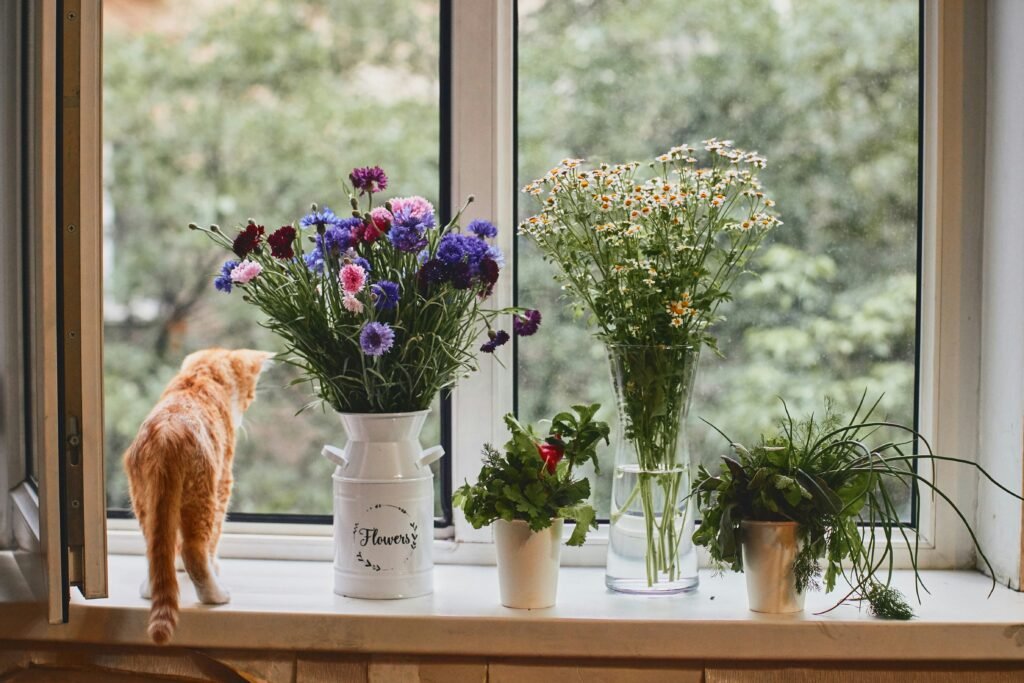
Houseplants make our homes look nice. But some can hurt our cats.
Here are some common houseplants that are toxic to cats:
1. Aloe Vera
Aloe Vera is well-known for its healing properties, but it’s harmful to cats. If a cat ingests Aloe Vera, it can lead to vomiting, diarrhea, and tremors. Always keep Aloe Vera plants out of your cat’s reach.
2. Peace Lily
Peace Lilies are popular indoor plants but highly toxic to cats. Eating parts of a Peace Lily can cause severe kidney failure in cats. Watch out for symptoms like drooling, vomiting, and difficulty swallowing if your cat comes into contact with this plant.
3. Pothos (Devil’s Ivy)
Pothos, also known as Devil’s Ivy, is easy to care for but dangerous for cats. Ingesting Pothos can cause vomiting, drooling, and difficulty swallowing. It may also irritate your cat’s mouth and throat. Keep Pothos plants well out of your cat’s reach.
4. Philodendron
Philodendrons are popular indoor plants that are appreciated for their lush foliage but are poisonous to cats. Chewing on Philodendron leaves can lead to mouth irritation, drooling, and vomiting in cats. Ensure Philodendrons are placed where your cat cannot access them.
5. Snake Plant
Snake Plants are hardy and stylish, but they are toxic to cats. If a cat eats parts of a Snake Plant, it can cause nausea, vomiting, and diarrhea. Keep Snake Plants in areas that are inaccessible to your curious cat.
By being aware of these common houseplants that are toxic to cats and keeping them out of reach, you can help ensure your home remains safe for your beloved pet.
5 Garden Plants Poisonous to Cats
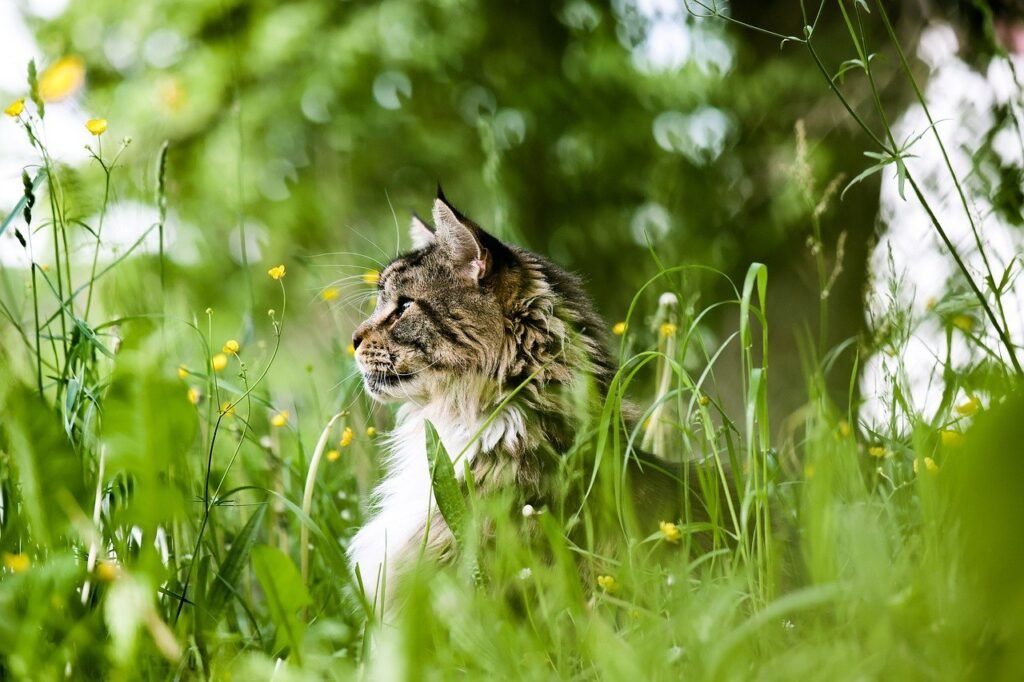
While garden plants add beauty to outdoor spaces, some can pose serious risks to cats. Here are garden plants that are toxic to cats:
1. Lilies
Lilies are stunning flowers but are extremely toxic to cats. Even a small amount can cause kidney failure in cats. All parts of the lily, including the petals and pollen, are dangerous. Look out for symptoms like vomiting, lethargy, and loss of appetite if your cat has ingested lilies. It’s crucial to avoid planting lilies in your garden if you have cats.
2. Daffodils
Daffodils brighten gardens with their cheerful blooms but are harmful to cats. Eating daffodils can result in vomiting, diarrhea, and abdominal pain for cats. In severe cases, ingestion can lead to heart problems. Take care when planting daffodils, and keep them away from areas accessible to your cat.
3. Tulips
Tulips are popular spring flowers but are toxic to cats. Ingesting tulips can cause vomiting, diarrhea, and drooling. The bulbs are particularly dangerous. Ensure tulips are planted in areas your cat cannot access to prevent accidental ingestion.
4. Azaleas
Azaleas are vibrant shrubs that add color to gardens but are poisonous to cats. Consumption of Azaleas can lead to symptoms like vomiting, diarrhea, and drooling in cats. Severe poisoning can even result in coma or death. Avoid planting Azaleas in your garden if you have cats roaming outdoors.
5. Chrysanthemums
Chrysanthemums are common garden flowers appreciated for their various colors but are harmful to cats. Eating Chrysanthemums can cause vomiting, diarrhea, drooling, and loss of coordination in cats. Keep these flowers out of your garden or in areas your cat cannot access to prevent accidental ingestion.
Being aware of these garden plants toxic to cats and taking precautions to keep them out of reach can help ensure a safer environment for your beloved feline companion.
What to Do If Your Cat Eats a Toxic Plant
Understanding what to do if your cat eats a toxic plant is important. By being prepared, you can protect your cat from the dangers of plants toxic to cats and ensure they get the help they need right away.
You must act quickly if you think your cat has eaten a toxic plant. Here are the steps you should take:
1. Remove the Plant
First, take the plant away from your cat. This distancing stops your cat from eating more of the plant. Put the plant in a place where your cat can’t reach it. Removing the plant right away can prevent further harm.
2. Check for Symptoms
Look for any signs of poisoning. These can include vomiting, diarrhea, drooling, lethargy, loss of appetite, difficulty breathing, and tremors or seizures. Knowing the symptoms can help you explain the situation to your vet.
3. Call the Vet
Contact your vet immediately. Tell them what happened and describe any symptoms your cat is showing. Your vet will give you advice on what to do next. They may ask you to bring your cat in for an examination.
4. Bring a Sample
If possible, bring a sample of the plant to the vet. This sample can help the vet identify the toxin and determine the best treatment. If you can’t bring the whole plant, a leaf or a picture can be helpful.
These steps are crucial for dealing with plants toxic to cats. Quick action can make a big difference in your cat’s health. Always keep your vet’s phone number handy for emergencies.
5 Safe Alternatives to Plants Toxic to Cats
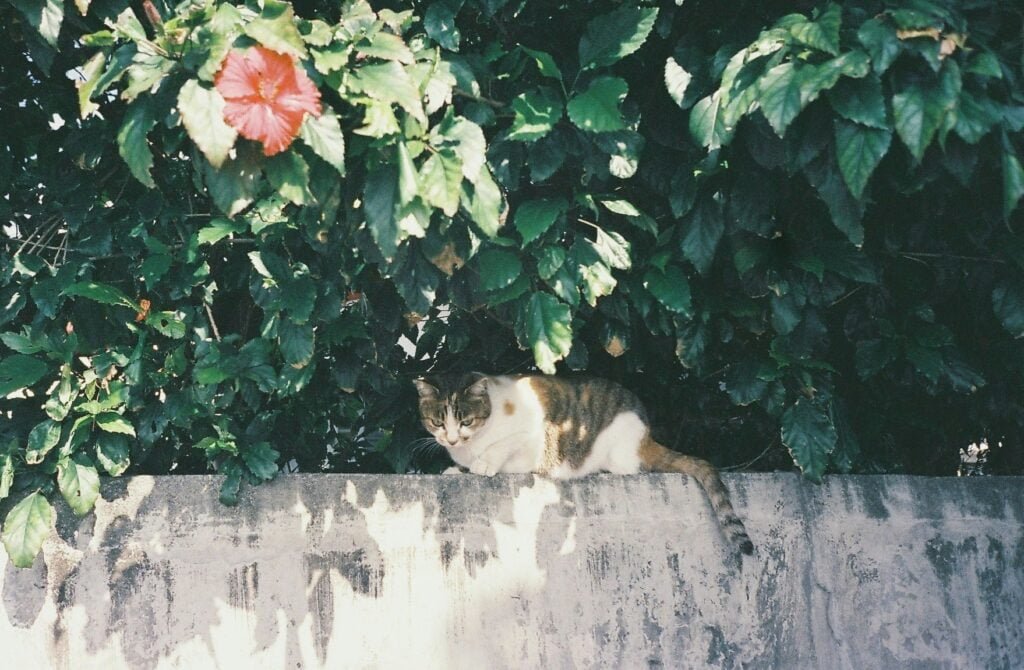
Choosing cat-safe plants ensures that your furry friend can enjoy the greenery without any risk of poisoning from plants toxic to cats. These plants enhance your living space and contribute to a safe and healthy environment for your cat.
You can still enjoy plants without risking your cat’s health. Here are some safe options:
1. Spider Plant
Spider Plants are safe for cats. They are easy to care for and look great in any home. Cats like to play with their dangling leaves, making them a fun addition to your space.
2. Boston Fern
Boston Ferns are safe for cats and add greenery to your home. They require a bit more attention, like regular watering and indirect light, but they’re worth the effort for their lush appearance.
3. Areca Palm
Areca Palms are safe for cats and give a tropical vibe to your home. They’re low-maintenance and thrive in bright, indirect light. Cats may enjoy lounging near their feathery fronds.
4. Cat Grass
Cat Grass is not only safe but also beneficial for cats. It aids digestion and provides entertainment. You can grow cat grass indoors or outdoors for your cat to nibble on when they feel like it.
5. Bamboo Palm
Bamboo Palms add a lush look to your home and are safe for cats. They’re easy to care for and can tolerate low-light conditions. Their upright growth and graceful leaves make them a lovely addition to any room.
How to Create a Cat-Friendly Garden and Protect Your Pet from Plants Toxic to Cats
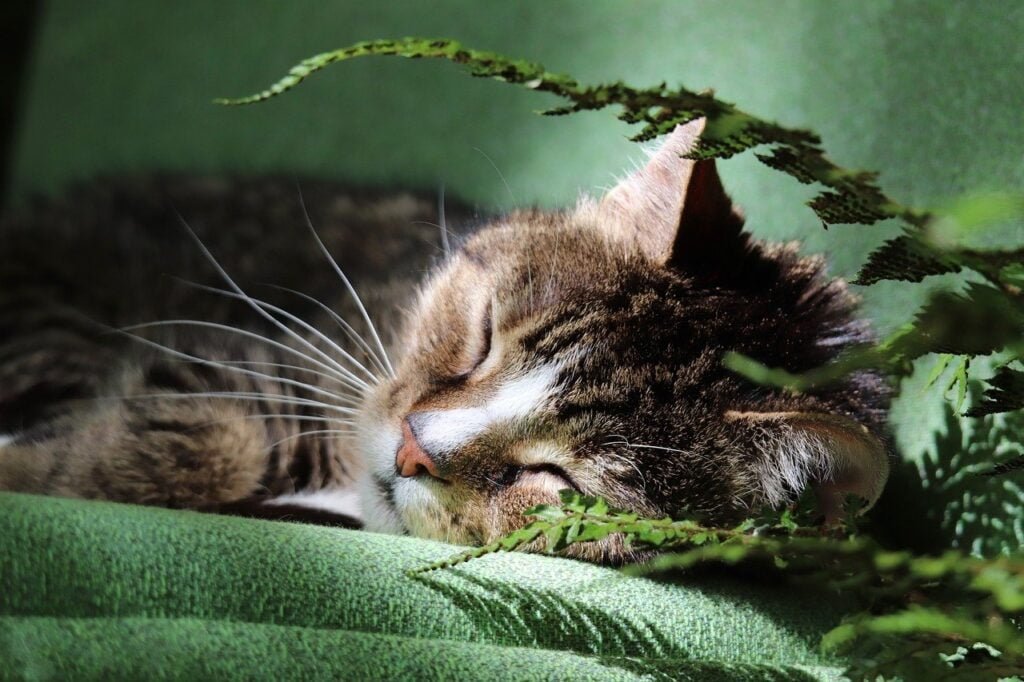
Creating a cat-friendly garden involves choosing safe plants, setting up a special cat zone, avoiding plants toxic to cats, and using organic products. By following these steps, you can ensure your garden is safe and enjoyable for your feline friend.
With some planning, you can create a beautiful garden that you and your cat will love.
1. Choose Safe Plants
Select plants that are non-toxic to cats. Safe plants won’t harm your cat if they nibble on them. Some good options include Marigolds, Petunias, and Zinnias. These plants are not only safe but also add color to your garden. Research and make a list of other cat-safe plants to ensure your garden is completely safe.
2. Create a Cat Zone
Designate a part of your garden just for your cat. Fill it with safe plants, cat grass, and catnip. Cats love cat grass and catnip because it gives them something to chew on and play with. Add climbing structures like small trees or cat-friendly shelves. Provide shaded areas where your cat can relax. You can use umbrellas or plant tall, safe plants to create shade. A cat zone gives your cat a safe place to explore and enjoy the garden.
3. Avoid Dangerous Plants and Plants Toxic to Cats
Keep plants toxic to cats out of your garden. If you have toxic plants that you can’t remove, make sure to fence them off. Use a sturdy fence your cat can’t climb over or squeeze through. This way, your cat can’t reach the dangerous plants. Always check plant labels before buying to ensure they are safe for cats.
4. Use Organic Products
Avoid using pesticides and fertilizers that can harm your cat. If ingested, many garden chemicals are dangerous, or your cat walks through treated areas and licks its paws. Opt for organic products instead. Organic products are safer for both your cat and the environment. Many natural options are available that work well and keep your garden healthy.
Conclusion
Alright, cat lovers, listen up! We’ve got a mission: Operation Plant-Cat Harmony!
Let’s face it, some plants are total party poopers when it comes to our furry friends. But don’t worry, we’re not ditching our green buddies or our whisker-faced pals! With a little plant know-how and some cat-friendly décor skills, we can create a purr-fect paradise for everyone.
Just keep your eyes peeled for those sneaky plants toxic to cats lurking in your jungle, we mean, your home and garden. And if your curious kitty decides to have an unauthorized salad bar moment, don’t panic! Just speed-dial your friendly neighborhood vet faster than you can say “hairball.”
So, arm yourself with plant knowledge, channel your inner cat-friendly interior designer, and get ready to rock this plant-cat coexistence thing!
With the right moves, you’ll be living your best life surrounded by lush greenery and content kitties. How’s that for a win-win?

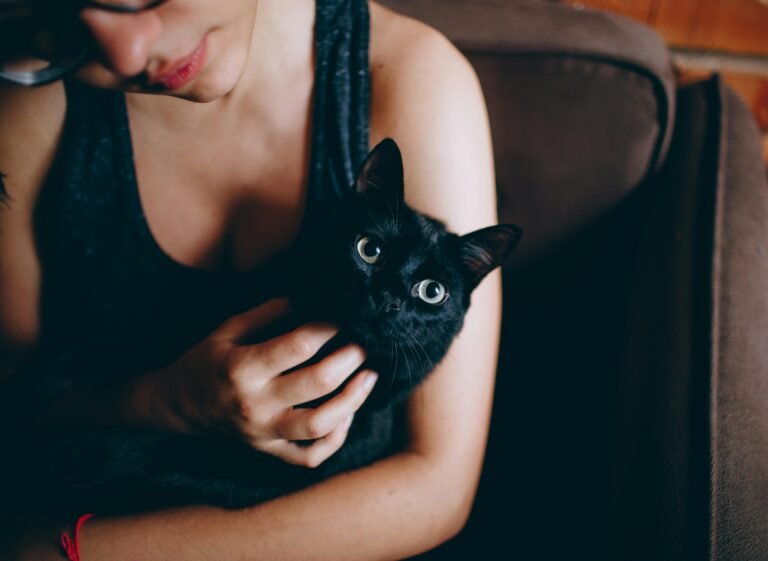
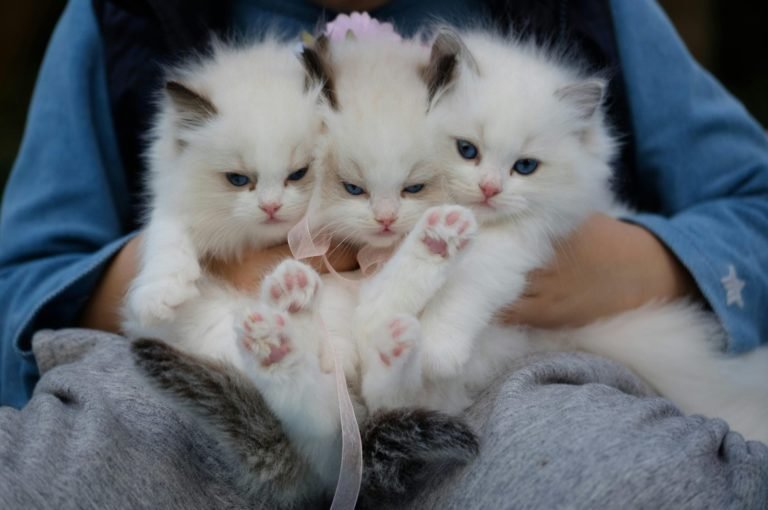
To the crazycatlife.org administrator, Keep the good content coming!